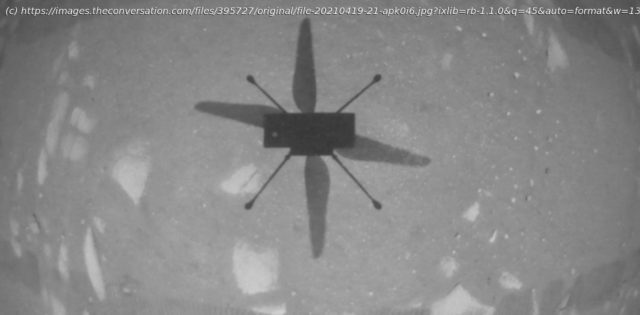The maiden flight of Mars helicopter was a significant advance in propulsion technology.
Imagine that you are flying a model helicopter or a drone. You are there with the auto controls. You switch them on. The rotors start to turn, gradually increasing their spin. You watch, then push the control for lift. Your helicopter rises, hovers, then at the next command moves forward. Oops, it didn’t go high enough. You quickly move the joystick and the drone rises to fly above the obstruction. Finally it’s in the air, moving at speed above sand dunes, hills and valleys – sending back pictures as the landscape unfolds. Now imagine that you are flying your drone on a planet 180 million kilometres away. It takes 20 minutes for your command to reach the planet – and the pictures you see of what is happening are 20 minutes old. You cannot take evasive or corrective action if anything goes wrong. If it went wrong, it would be too late. This is the type of situation that Nasa’s engineers did not wish to experience on the maiden flight of the Ingenuity helicopter on Mars on April 19. And luckily they didn’t. The flight had already been postponed because of software problems. Given the issue with the time delay between Mars and Earth, all the commands to operate Ingenuity had to be sent in advance – and so the engineers had to be certain that their command sequences were error free. All the planning and calculations paid off. Just after 12:00 BST, a Nasa engineer announced to mission control that “all data sets are nominal”. This, of course, is space-talk for: “We are incredibly happy, everything has gone well.” A few minutes later, we saw the data – a rather unprepossessing graph. But it was sufficient for the engineers in mission control to clap and cheer. Then came the images – the first from Ingenuity’s camera, a picture of its own shadow as it hovered above the surface.






